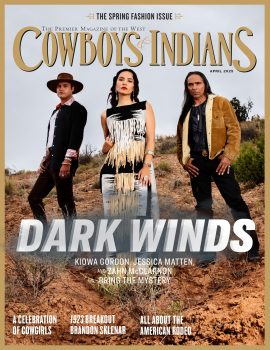C&I is proud to present the trailer for writer-director Tony Tost’s seriocomic neo-western about cultural clashes, violent confrontations, and the struggle for control of a Native American artifact.
There’s a conspicuously Caucasian free-range youngster named Cal (Gavin Maddox Bergman) who firmly believes, and will tell anyone who will listen, that he is the reincarnation of legendary Lakota warrior Sitting Bull.
And then there’s his loving but not-always-attentive mother, Mandy (singer-songwriter Halsey), who lives in an isolated double-wide trailer with Cal and her abusive partner, Dillon (Eric Dane), a small-time hood who repeatedly overestimates his own cleverness.
Dillon strikes a bargain with Roy Lee Dean (Simon Rex), a slickly condescending antiquities broker who is much craftier and much, much more unscrupulous, to swipe an invaluable Lakota ghost shirt from a rich private collector who prides himself on accumulating only the rarest Native American artifacts.
But the prelude to that deal negotiated in a roadside diner is inadvertently detected by Penny Jo (Sydney Sweeney), a shy waitress who dreams of moving to Nashville and becoming a country music star despite her stammer. To make her dreams come true, she enlists the assistance of Lefty Ledbetter (Paul Walter Hauser), a sad-sack lonely guy with an unfortunate habit of proposing to women after a few dates, only to be repeatedly (and predictably) rejected.
Although Lefty has not proposed to Penny Jo — not yet, at least — he is sufficiently simpatico to become her partner in crime as they pursue Mandy after the runaway mom appropriates the ghost shirt that Dillon appropriates.
Meanwhile, Cal makes the acquaintance of two genuine Native Americans, Ghost Eye (Zahn McClarnon — yes, that Zahn McClarnon) and Hank Spears (Derek Hinkey, recently McClarnon’s co-star in Season 3 of Dark Winds). Ghost Eye is understandably skeptical when Cal reveals his Sitting Bull fixation. (“C’mon, kid! This ain’t exactly the golden age of cultural appropriation right now!”) But he believes the boy’s story about the stolen ghost shirt — and sets out with Hank and others to retrieve this misappropriated exemplar of their cultural heritage.
The crazy quilt of disparate characters is artfully and engrossingly entwined in Americana, writer-director Tony Tost’s impressively crafted and rousingly entertaining debut effort as a feature filmmaker. As their paths cross and their fates collide, you can’t help trying to predict what will happen next. Odds are, however, that your guesses will be off the mark.
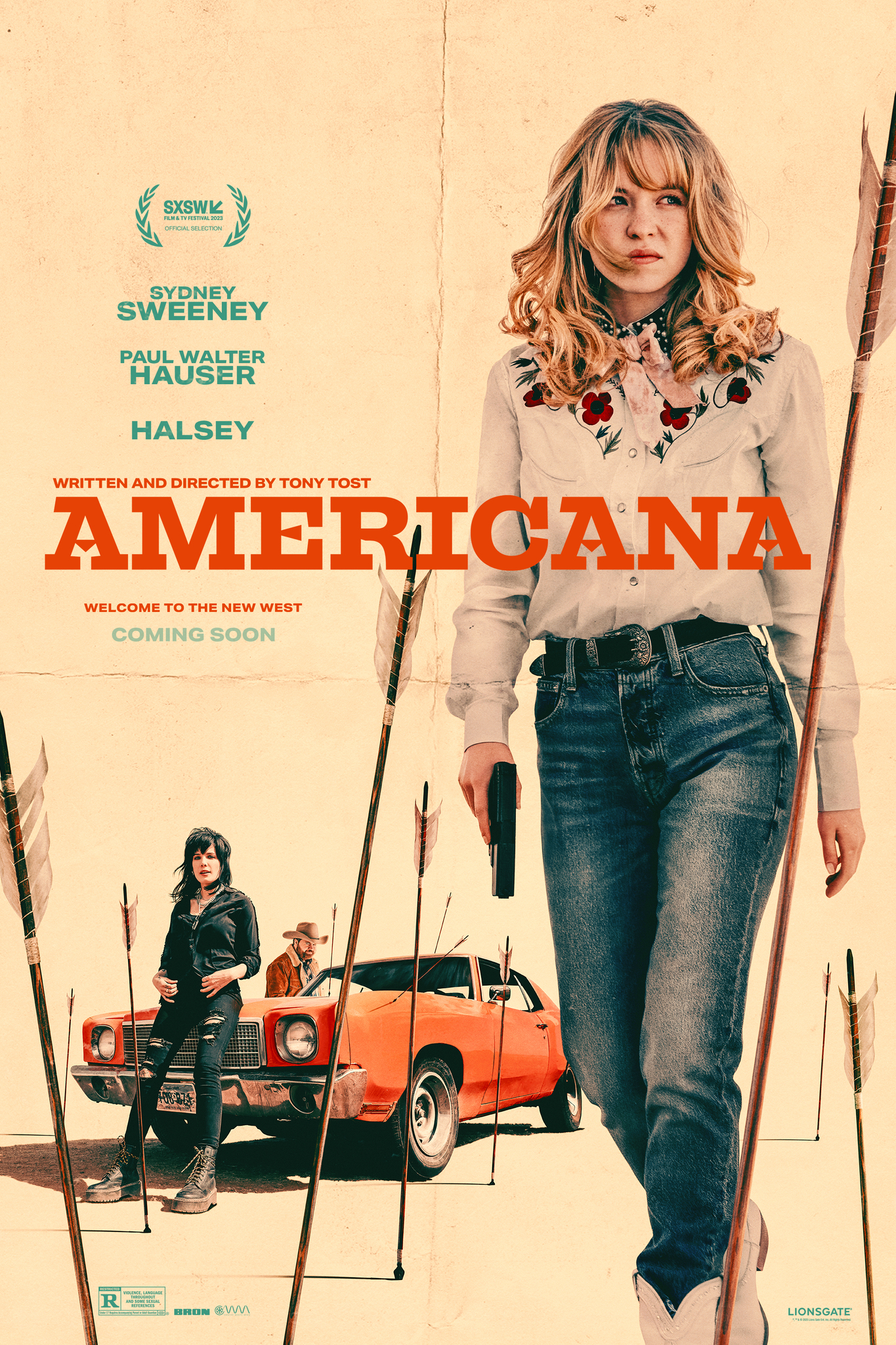
Americana — which opens August 15 in theaters nationwide — had its well-received premiere at the 2023 SXSW Film Festival, where Hollywood Reporter critic Justin Lowe praised it for incorporating “the wide-open spaces, cultural conflicts and endemic lawlessness typical to Westerns, while inverting conventional expectations by foregrounding Native American perspectives on some of the film’s thornier social issues.” IndieWire critic Rafael Motamayor was similarly impressed: “Tost creates a believable world that can fit these different storylines and engage the audience with them before diverting to the next one, then the next one. … Tost’s script allows the characters to drive the narrative and to make the world of the film feel lived in.”
Both critics noted — with ample justification — Americana’s debt to Quentin Tarantino. But the movie also echoes the style and substance of Robert Altman, especially that late, great filmmaker’s Nashville.
An Altman comparison actually seemed to be music to Tony Tost’s ears during a recent C&I interview.
“If I were to make a Mount Rushmore of Director Heroes,” Tost said, “it would be like Howard Hawks, Sam Peckinpah, Akira Kurosawa, and Robert Altman, right off the top of my head. I love the aesthetic of Altman’s films — both their images and sounds, and the kind of actors and actresses he cast. So, yeah, the Altman thing is definitely something that I want to do my version of.”
As for Tarantino, “He’s not an influence I pursue, but it’s so baked in to the material. I fell in love with movies as a teenager, with Tarantino films, Cohen brothers films, Spike Lee films. And so it’s almost like it’s an influence that’s there, whether I’m purposefully going for it or not. It’s so baked into just what I love about the medium.”
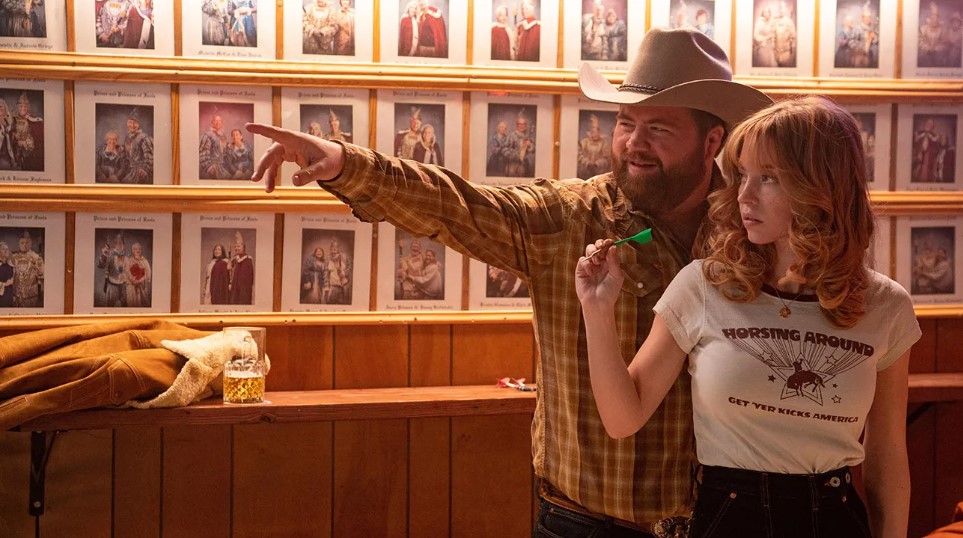
Tost cut his teeth on neo-western scenarios when he wrote and produced several episodes of TV’s Longmire. During that period, he befriended Zahn McClarnon, who was quick to commit when Tost approached him to appear in Americana.
“He reached out to me about the character named Ghost Eye,” McClarnon told C&I, “and kind of explained him a little bit. And of course I love Tony, and I love his writing, so I was happy to come aboard when he finally got all the funding together, and certainly made time to come down to Albuquerque and work on the show.
“I connected a lot with the script just because it was very similar to the films I grew up with in the ‘70s that had a kind of neo-western vibe, like Badlands or Two Lane Blacktop.” Also, “Tony said he’d based [Ghost Eye] on a leader of a movement similar to the American Indian Movement or the Black Panthers. I’m very familiar with the history of AIM in the ‘70s, so that was certainly one of the other things that drew me to [Americana].”
For boxer-turned-actor Derek Hinkey (pictured above with McClarnon and Gavin Maddox Bergman) , who was cast by Tost prior to his appearances in Horizon: An American Saga — Chapter 1, American Primeval, and as Shorty Bowlegs Dark Winds, Americana hit surprisingly close to home.
“I looked at the script a little bit,” Hinkey told C&I, “and when I studied the character of Hank Spears, I found a lot of similarities to who I am. While growing up as an Indigenous person, a Native American, I always had a slight issue with going to a museum and seeing my grandmothers’ and grandfathers’ and other people’s bones and whatnot in the museum. I always felt like I never understood how that could be. So I felt like Hank and I shared a lot that was a commonality.”
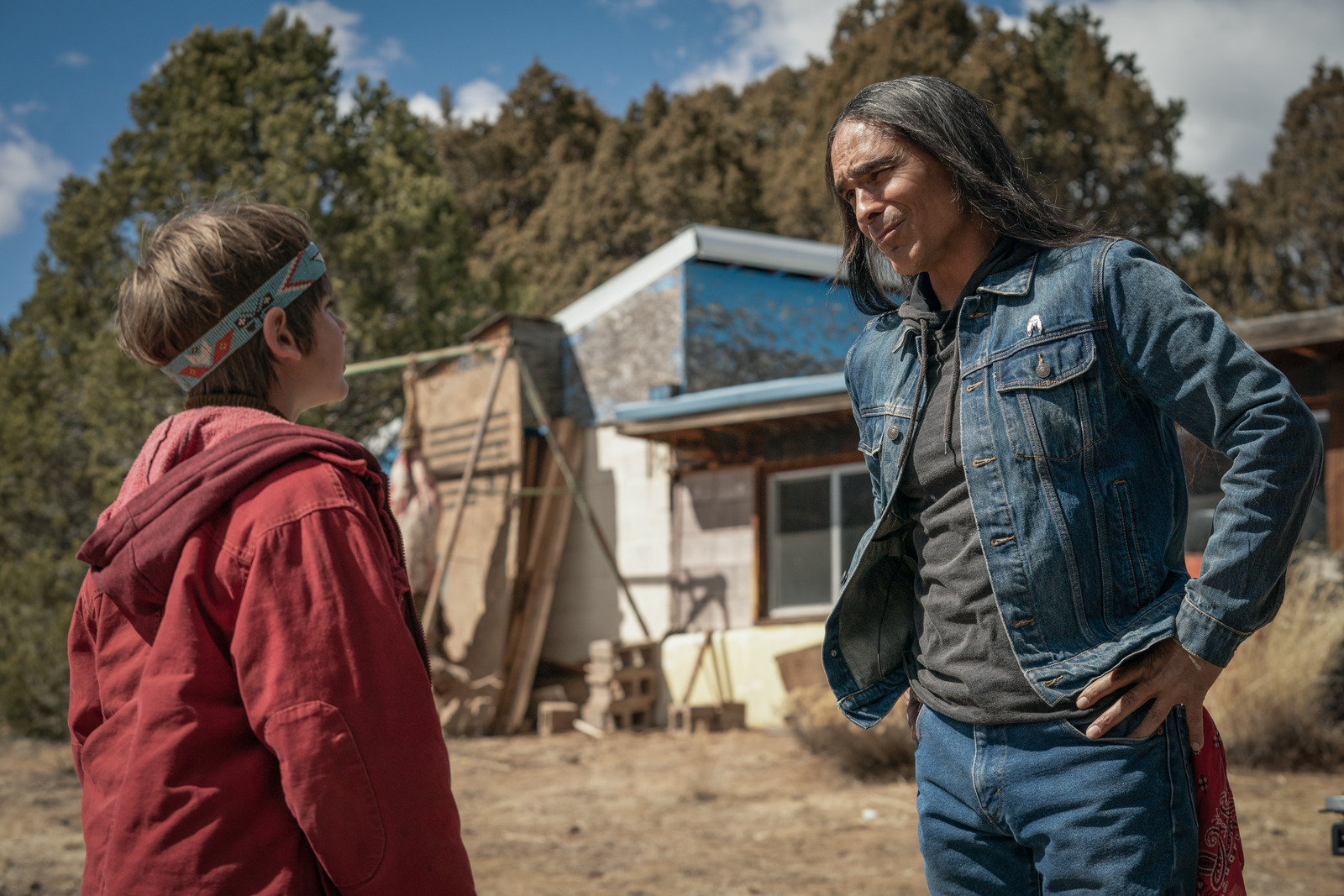
Of course, the opportunity to act opposite Zahn McClarnon for the first time was a major selling point as well.
“That was probably one of my biggest takeaways, being new to the craft of acting,” Hinkey said. “Being able to actually spend time with him while we were shooting. I would study Zahn. I would watch him consistently and constantly. He’s the best at what he does. He deserves his flowers.”
“[Americana] really shows that in terms of our culture, we know who we are — and you guys should know who you are.” — Marcus Red Thunder
The theme of cultural appropriation resounds throughout Americana. So much so, in fact, that Tost asked for advice and collaboration from Marcus Red Thunder, a longtime Cheyenne friend of Craig Johnson, author of the Longmire book series, and a technical advisor for the Longmire television show.
“There were a couple things I don't want to mention specifically,” Red Thunder said, “but there were changes that I suggested in the original script.” Initially, he admits he was taken aback when young Cal first proclaimed his Sitting Bull connection. “When I first read it, I was like, ‘What the heck is this about?’ You got that cringey kind of tinge of cultural appropriation.
“But there’s a little boy there who’s lost. And the true meaning is that he knows, from my point of view, there are people that really know themselves — and that’s what he saw within Natives. And the ending is so profound as far as — well, I don’t know if we want to get into the specifics of the ending. But it really shows that in terms of our culture, we know who we are — and you guys should know who you are.”
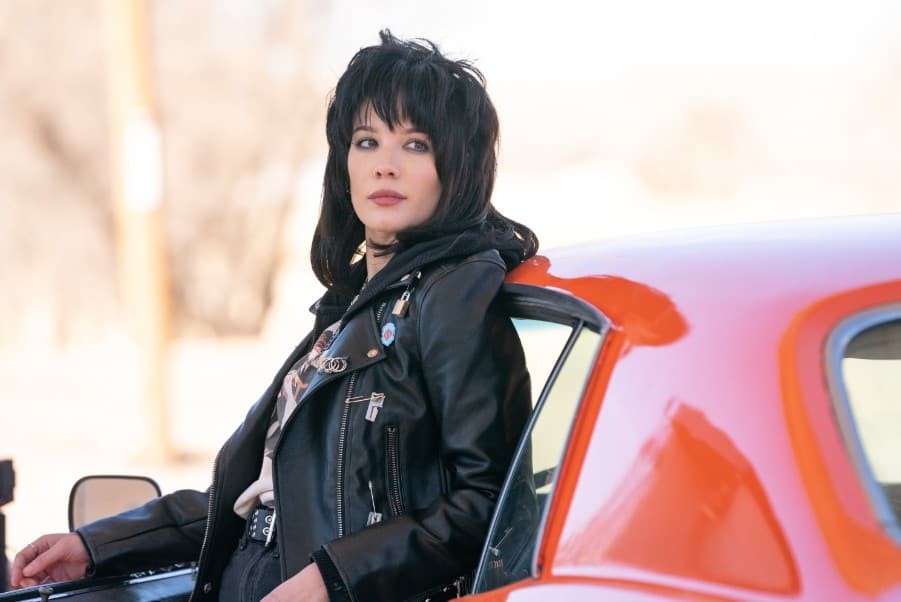
Which sounds about right to Tony Tost.
“I don't start off intending to tackle particular themes at first,” he said. “I’m just like, let’s come up with some characters that I'm interested in, in a world I'm interested in, a story that I find entertaining. And then in the process of writing, I start discovering things.
“I think I'm always fascinated by, on one hand, all the cultural appropriation and exploitation that takes place [with regard to Indigenous people].But one of the things I love about American culture is these communities with different roots that influence each other. So there’s the flip side of that coin. I thought it’d be interesting that this boy is growing up on old westerns. And so he has this kind of retrograde conception of what Native American life is like. But then in the world of our movie, he goes to an actual reservation, and he finds that actually the people here are not anything like these old Hollywood westerns.”
In McClarnon’s view, Americana “is a modern day western, kind of a neo-western, set in a small rural South Dakota town following these lives. Where the lives of these outsiders and outcasts are colliding, and each one of them has a quest to reclaim their future. But they’re also facing the ghosts of their pasts.”
Better still, Americana interweaves its serious concerns with a wild and wooly, wall-to-wall exciting story of schemers and dreamers, ambition and avarice, face-offs and shoot-outs. C&I is pleased and proud to present the first trailer for Tost’s film.













